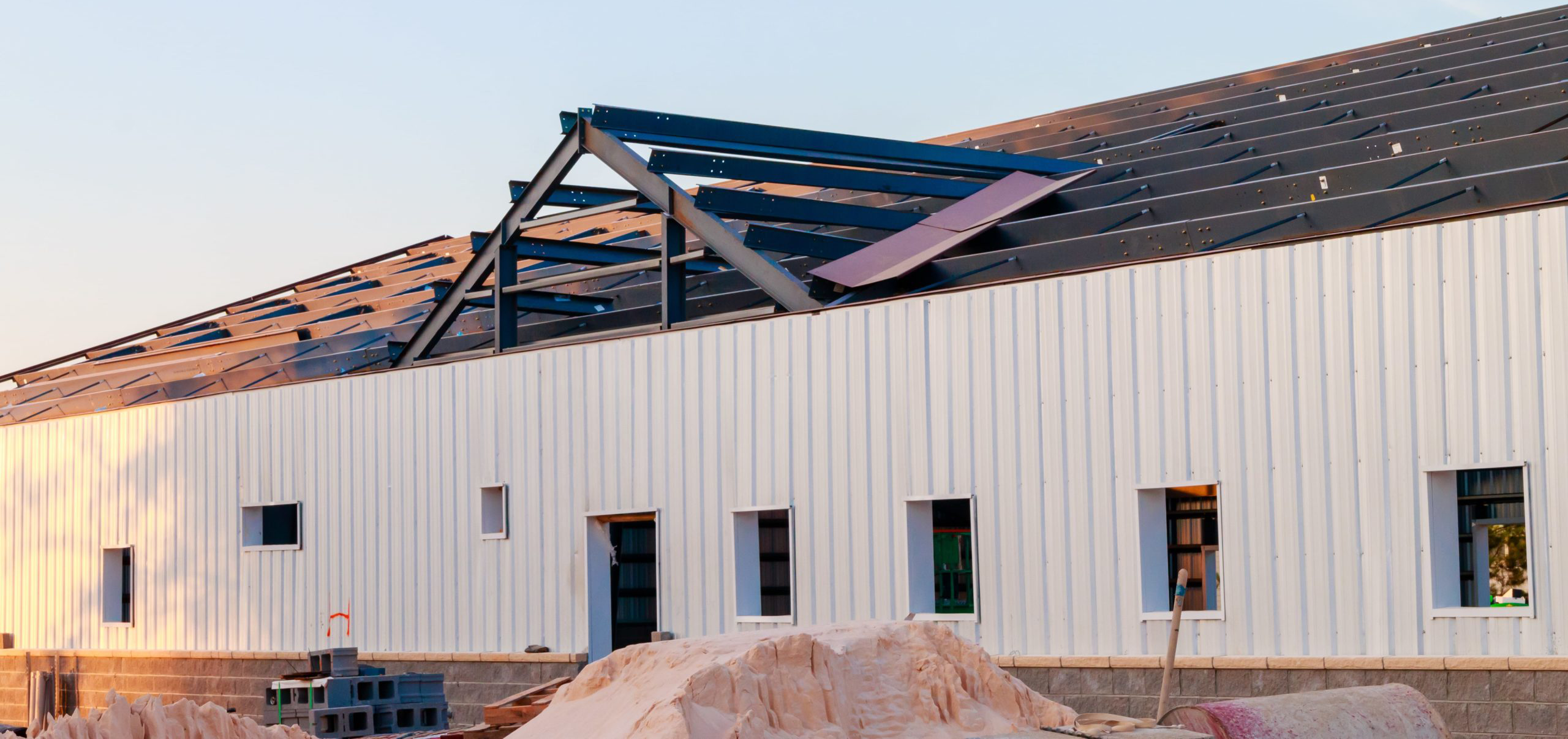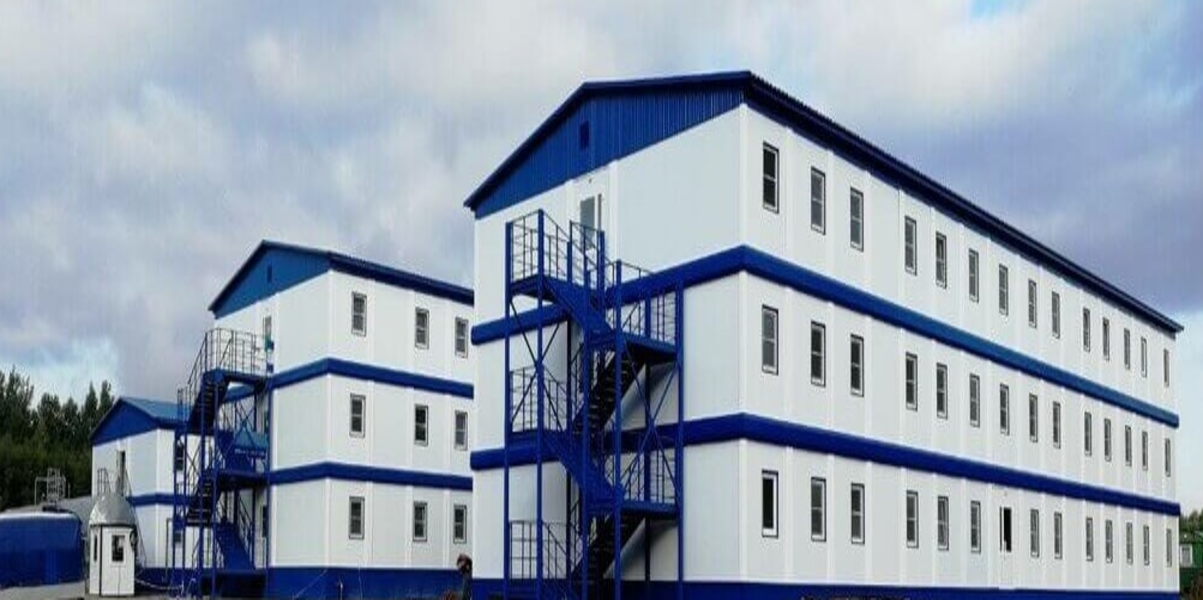
The Benefits of Prefabricated Buildings in Today’s Economy

With current economic pricing trends increasing, many consumers and companies seek methods to reduce costs while maintaining consistent quality and performance in products and materials. For many, this can be a tightrope walk, as cost and quality are forever part of the balancing act.
Fortunately, prefabricated buildings represent a rare occurrence in which quality and value rise while prices remain consistently lower than traditional alternatives. This balance of price and performance makes prefabricated designs so popular for industrial building construction. Let’s explore some of the other benefits of choosing prefabricated steel buildings.
Today’s Economy Focuses on Quicker Construction
Modern industries and the economies surrounding them are consistently looking for methods to create efficiency and increase productivity. The construction industry is no exception. As a result, more consumers and building companies are configuring prefabricated parts or structures into their repertoire.
Keeping up with building and labor costs requires considering creative ways to offset material pricing and construction methods. With prefabricated structures, contractors can offer a durable and versatile product that reduces materials and labor costs without reducing quality.
In an economy that increasingly has no room for waste or excess, both time and cost are positively affected when considering prefabricated building designs.
Prefabricated Buildings Suit the Current Economy
Not only do prefabricated steel buildings offer improvements in the overall cost and construction timelines, but they can also benefit consumers in several other ways.
Time-Saving
Of course, one of the most significant advantages of prefabricated steel buildings is their uniformity of design and the ability to manufacture parts and pieces in mass quantities. Using pre-engineered specifications for the various building parts, the factory can produce the exact same quality and dimensions for each piece each time. An entire building can be manufactured and ready for shipping in as short as a week.
If the buildings have a pre-engineered design template to work from, the planning is also a quicker process. The customer and the building company will work together to determine the size and customization needed, all within the umbrella of the building’s design specs. Planning is more about discussing square footage and usage than building design.
Then, when the building’s parts and pieces are delivered to the foundation’s site, the construction crew can begin work as soon as they’re available. Most foundational work will occur during the manufacturing and shipping process, so many projects are ready to start as soon as the materials arrive.
Depending on the size and scope of the building, many projects can be fully completed within five months. That is a dramatic improvement over traditional construction project timelines.
Cost-Effective
Prefabricated steel buildings can be cost-effective in several ways. In traditional construction, there is a percentage of materials that won’t be used, will be trashed, or discarded. These percentages are built into the cost of the project. Using pre-engineered, prefabricated parts and structures can reduce overages to minimal amounts.
Labor costs can also be reduced since the initial construction occurs in a factory or manufacturing facility. When the building is delivered to the job site, crews can immediately begin construction. Plus, the overall time for a finished construction project is much shorter than traditional construction timelines, so labor costs are significantly reduced while improving the efficiency of the building process.
Additionally, as materials prices continue to rise, building with products that will last and look good is essential as materials prices continue to increase. Avoiding additional maintenance and repair costs are important factors that can’t be overlooked when discussing pricing. Steel buildings are highly durable and long-lasting, making them a wise investment.
Environmentally-Friendly
Regarding durability, prefabricated steel buildings represent a significant move towards using sustainable materials and efficient building practices, which benefit the environment. Since steel can withstand bumps and bruises without much wear and tear, it is a highly effective building material.
Steel is corrosion-resistant and can be coated or painted to improve its overall resistance to the elements. It is also strong enough to use fewer raw materials yet offers a more robust product than many traditional construction materials.
Its durability also means it’s less likely to need repairs or replacement pieces, reducing the need for natural resources. Steel buildings can also be upcycled, as they can often be deconstructed and reconstructed at a new site for a different purpose. Some buildings can even be transported entirely constructed.
Even the emissions and energy needs associated with the manufacturing and shipping of prefabricated buildings represent a reduction over traditional means. Streamlining the building framing and initial construction methods means less time working and using machines on the job site. The materials shipping process also improves when all of the needed materials ship to the job site in one load, as opposed to multiple trucks for multiple weeks and months.
Customizable
Prefabricated steel buildings often have predetermined designs for their size and shape but not for their completed interiors. Once a customer has determined the building size they’ll need, their next step is to start designing and customizing the interior and exterior features such as entrance doors, awnings, or roofs and coverings.
For the inside, the customization is up to the customer’s imagination. Whether for industrial or factory settings or as finished offices or even residential spaces, the interiors of steel buildings can accommodate a bevy of designs.
Flexible
As customizable as the buildings are, they can easily be configured and used by various industries and organizations. Thanks to the strength of steel, these buildings can also feature an open and column-free floor plan. Open floorplans mean the spaces can be used in almost infinite designs.
Energy-Efficient
Energy usage can be greatly reduced between the manufacturing, shipping, and construction methods surrounding prefabricated steel buildings. Factories manufacture a limited number of similar parts and pieces, offering more efficiency and streamlining.
Shipping is consolidated and logical, as opposed to when a need arises. Plus, construction techniques have been reduced to focus on the schematics of the building’s design. All of these changes make for a more energy-efficient building process.
Mass-Producible
With the ability to mass-produce prefabricated buildings and parts, efficiency and quality control can become guiding factors in maintaining production standards. Complete buildings can be ready for shipping in less time without concerns of individual builder variations changing the overall structural integrity.
Quality Control
Since the buildings are created from consistent templates, it’s much easier to ensure that each part and piece is manufactured and constructed following strict guidelines. Each element of the prefabricated building process from the factory to the construction site involves a tight set of parameters and controls. This uniformity of design helps to ensure that each structure will live up to its expectations.
Reduced Site Disruptions
Adding to an existing structure or constructing more separate buildings on company or private property will increase the number of people, machines, and activity for any site. With prefabricated buildings, though, the disruptions are minimized, since the construction process is much more streamlined and takes less time overall.
Reduced Labor
As mentioned above, the amount of labor required in the workforce and time can be significantly reduced when working with prefabricated buildings. Depending on the size of the building, many crews can be reduced to half the workforce previously used in traditional construction jobs.
Equally, the labor required in the factory setting is also less since machines mass-produce the parts and pieces.
Ease
Considering the large number of advancements used in the designing, manufacturing, and building of prefabricated structures, the overarching payoff is how easy they are to configure and construct. These amazingly durable and versatile buildings can go from creation to completion at a fraction of the time and effort it typically takes traditional construction jobs.
Make A Statement
Building with prefabricated steel is a commitment to your company and your community. These structures offer decades of service and can be used in various ways. They’re also beneficial to the planet and your pocketbook. If you want to solidify your business or organization, a prefabricated steel building is an excellent option for promoting growth and stability. Contact Coastal Steel Structures today to learn more about pre-engineered steel structures for your needs.
LETS WORK TOGETHER ON YOUR DREAMS!
Are you ready to start your steel building journey? Request a quote today and speak to one of our experienced team members to set you up for success and make your vision a reality!
GET A QUOTE